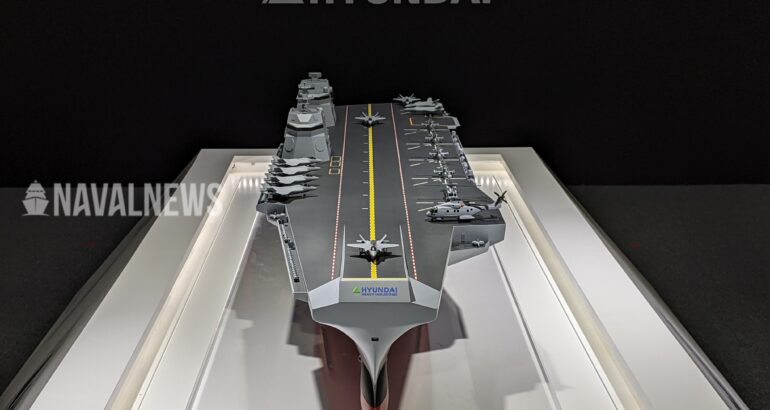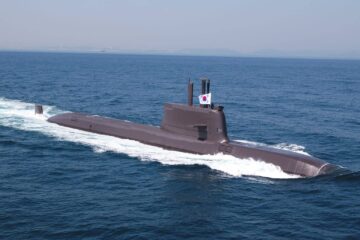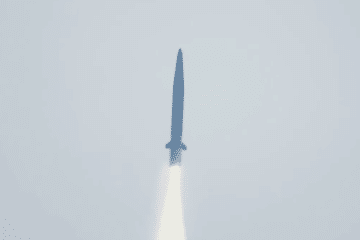Naval News reported last week that CVX had been axed from the 2023 defense budget. This was confirmed with the release of the government budget proposal for 2023 on August 30th.
The government has requested ₩ 57.12 trillion won or around $ 42.4 billion for defense spending next year, a 4.6% increase from 2022. Of this, ₩ 17.9 trillion or around $13.3 billion has been allocated to new acquisition programs, with the remaining funds assigned for maintenance and operations.
“The government has allocated significant funds to the defense budget despite its focus on creating a ‘healthy budget’ because of the very serious security situation.”
Ministry of National Defense of South Korea
The budget reflects the priorities of the new administration under President Yoon Suk-yeol which has downplayed the importance of CVX and emphasized that of the so-called “three-axis system.”

The three-axis system envisions a pre-emptive strike against North Korea when a nuclear attack against South Korea seems imminent, followed by the interception of missiles that have already been launched and a massive conventional retaliatory strike against the North Korean military and its top brass. Funding for the system will increase 9.4% to ₩ 5.255 trillion or around $ 3.9 billion according to the proposal.
This means that South Korea’s submarine program will also get a boost. The KSS-III submarines, which carry ballistic missiles and have been given ₩ 248.6 billion won or around $ 185 million in funding next year, are a crucial component of the third axis of the three-axis system, dubbed “Korean Massive Punishment and Retaliation (KMPR).” Submarine-launched ballistic missiles (SLBM) from KSS-III will hit North Korean bunkers and command control facilities during a conflict with North Korea. In addition to its role in KMPR, the KSS-III submarines are likely to be tasked with shadowing the sinpo-class, North Korea’s SLBM-capable submarines, due to the former’s improved range and endurance. ROKS Dosan Ahn Changho, the lead ship of KSS-III Batch I, deployed for the first time earlier this month.

Other notable naval programs include the Ulsan-class frigate and the anti-submarine warfare unmanned underwater vehicle (ASWUUV), which have been allocated ₩ 429.5 billion or $ 390 million and ₩ 35.6 billion or $ 26.5 million in funding respectively.
The Ulsan-class frigates – which are 129 m in length, 15 m in width, displace 3,500 tons, and have a maximum speed of 30 knots – will be the workhorse of the Republic of Korea Navy in the coming decades. Construction on the first ship began earlier this year in April.
The ASWUUV is a “large displacement umanned underwater vehicle” that is 6.5 m long and displaces 9 tons. South Korea’s Agency for Defense Development and Hanwha have been jointly developing the system since 2017, with the first “operational demonstration” taking place in June earlier this year.






